My cycling life often exists in a middle ground. I’m not a racer, and while I participate in events that are technically races, podium finishes are usually out of reach. Yet, I push myself hard, covering distances that challenge most, and I favor performance bikes and cycling apparel, even without aiming for the top spot.
This in-between status creates a unique challenge when it comes to group rides. I’m not quick enough for the crit racing groups, and my distances are too long for typical road racers. Gravel riding seems like a potential fit, but again, my speed isn’t quite there. I find myself caught between the fast and slow packs. This is particularly noticeable when choosing gravel equipment, especially shoes. I often encounter steep, technical sections where walking is necessary, but I still demand ultra-stiff soles for efficient power transfer. I need a shoe that can endure long, demanding rides, possibly even multi-day adventures, while also providing the durability to handle rocky terrain. Among the vast array of bike clothing reviews, finding shoes that meet these specific needs is rare.
I suspect I’m not alone in this predicament. If you’re also seeking this blend of performance and practicality, here are my top picks for the best Specialized Bike Shoes for gravel riding.
Specialized Recon 3.0
Late last year, I journeyed to Louisville, Colorado, to visit Specialized’s new Innovation Center. My goal was to speak with Nick Gosseen about the brand’s innovations, particularly in bike shoes. I brought along my own well-loved, racy gravel shoes to discuss their features and performance. Interestingly, those shoes, fresh from a trip to Colombia, revealed a significant crack in their unprotected carbon forefoot during our conversation.
This unplanned shoe malfunction became the perfect segue to discuss my specific gravel shoe needs with Gosseen and his team. I described the rocky, challenging sections in Colombia where walking was essential for stability, and the long, mixed-terrain rides exceeding 100 miles where performance was paramount. Gosseen then introduced me to a shoe not yet released to the public: the Specialized Recon 3.0.
It’s crucial to understand that the Specialized Recon 3.0 isn’t a downgrade from the S-Works Recon, despite lacking the S-Works designation. They are different models catering to different riding styles. For racers who prioritize minimal walking, the S-Works Recon is ideal. However, for riders needing a balance of performance and walkability, the Recon 3.0 emerges as the best specialized bike shoe Specialized offers for gravel adventures.
The design of the Recon 3.0 closely mirrors the S-Works Recon. The upper maintains the same wide forefoot shape, dial placement, and cable routing. Critically, the Recon 3.0 shares the same stiff carbon plate found in the higher-priced S-Works model, ensuring excellent power transfer.
The key distinction, and the reason for my preference, lies in the carbon plate’s treatment. While the S-Works Recon leaves much of the carbon exposed, the Recon 3.0 incorporates deep lugs and rubber cladding. Although a section of carbon remains exposed in the midfoot, crucially, the forefoot – the area bearing the brunt of rocky scrambles – is protected.
Specialized highlights “stride” technology in the Recon 3.0, designed to enhance walkability through added forefoot flexibility. However, in practice, the carbon plate remains remarkably stiff with no discernible flex at the front. Despite this stiffness, walking remains manageable due to the effective traction of the rubber lugs and just enough give in the sole. These aren’t lightweight hiking shoes, but that’s precisely the point. They are specialized bike shoes designed for gravel riding that may require some off-bike excursions.
Another significant difference, which I consider an upgrade, is in the closure system. The S-Works Recon utilizes a custom BOA dial designed by Specialized, featuring metal construction and meticulous detailing for enhanced grip and precise adjustment. While aesthetically pleasing and offering refined adjustments, it lacks the pop-to-open release feature found in BOA Li2 dials.
The Recon 3.0 opts for BOA Li2 dials, providing both precise adjustment and a convenient pop-to-release function. While these dials are plastic, the added functionality is a worthwhile trade-off in my opinion.
The primary drawback of the Recon 3.0 is its weight. It’s approximately 100 grams heavier per shoe compared to the S-Works Recon, a noticeable difference. This weight increase is the trade-off for the added rubber cladding and durability. However, this added material results in a specialized bike shoe that is significantly more robust and less prone to damage from rough terrain.
For detailed specifications and purchasing information, visit the Specialized website.
Trek RSL Mountain Bike Shoes
The Trek RSL mountain bike shoe aligns more closely with the S-Works Recon in its design philosophy than the Recon 3.0. While I consider the Recon 3.0 versatile enough for racing, Trek positions the RSL specifically as a race shoe. This race-focused design presents both advantages and disadvantages, but for riders prioritizing speed, the RSL might be the best specialized bike shoe choice.
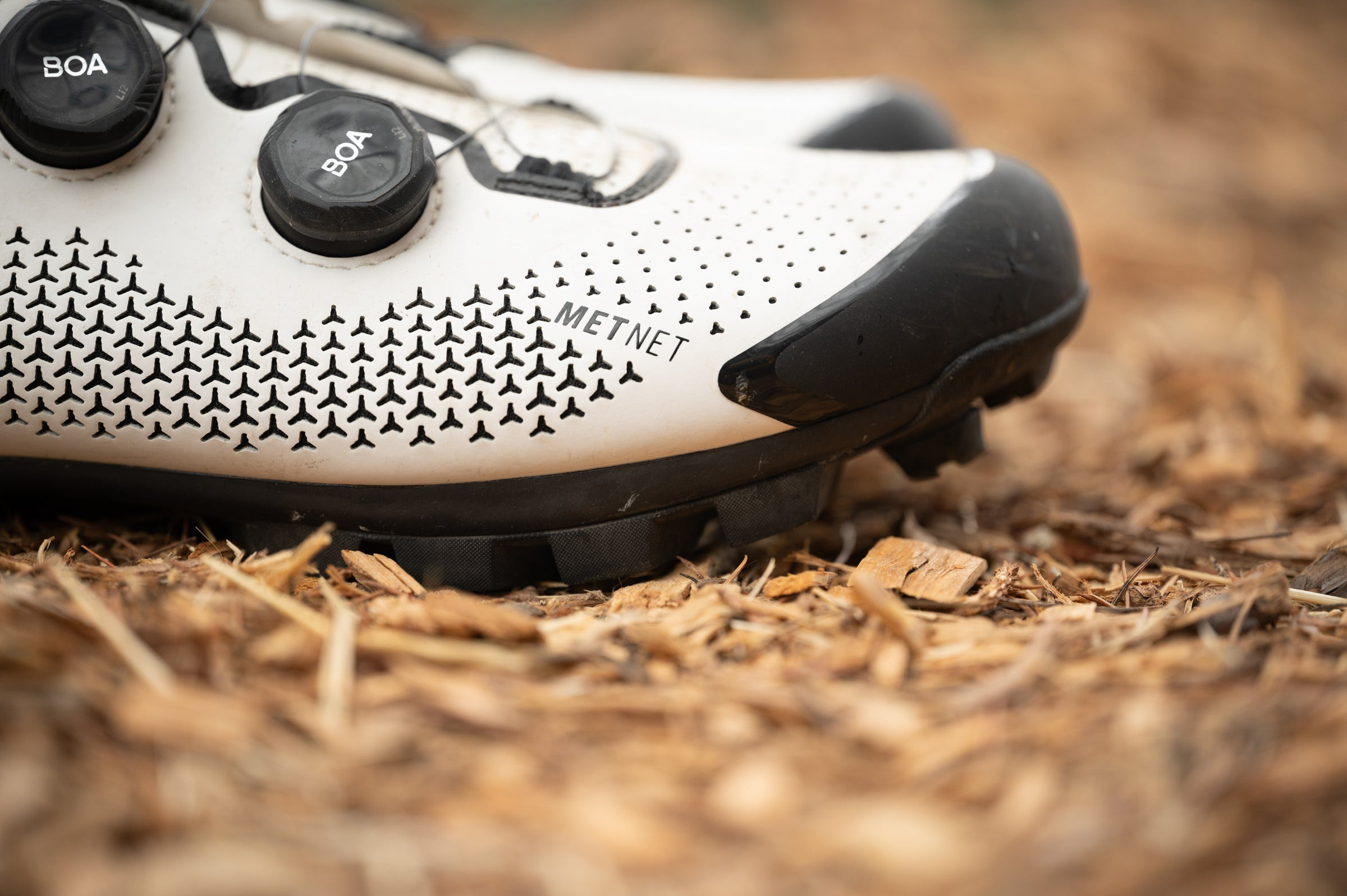 Trek RSL mountain bike shoes, a specialized bike shoe option designed for race-focused gravel riding
Trek RSL mountain bike shoes, a specialized bike shoe option designed for race-focused gravel riding
The central theme with the Trek RSL is the balance between race performance and adventure capability. The sole is constructed from carbon, achieving maximum stiffness, rated by Trek as a “14 out of 14.” While the numerical rating is subjective, the stiffness is undeniable. The sole is also partially protected, though less so than the Specialized Recon 3.0. The Specialized sole offers superior mud and loose surface handling, but it contributes to a heavier shoe. Trek prioritizes lightness, achieving a weight of approximately 320 grams per shoe (size 44) through material optimization and a more open cleat area.
While the exposed carbon is more than I’d prefer for rugged terrain, it appears sufficiently protected for most race conditions. Moving to the upper, Trek adopts a similar wide forefoot shape to Specialized but implements it differently. Trek maintains its lightweight approach with a thinner outer material. While both shoes offer ample toe box space, the Trek RSL has a lower volume feel, with the upper sitting closer to the base over the toes.
Enhancing the open feel in the forefoot, Trek incorporates MetNet technology. This involves triangular cuts in the outer material to increase flexibility. Visible as perforations transitioning from dots to triangles near the metatarsals, MetNet allows the material to expand as the foot swells, preventing hotspots.
For closure, the Trek RSL also employs a dual BOA dial system, utilizing the same BOA Li2 dials as the Specialized Recon 3.0. Both brands leverage the Li2’s pop-to-release and incremental adjustment capabilities. Specialized uses a single zone per dial, while Trek loops the lower wire through a second set of guides, effectively doubling the affected area. In practice, the difference in performance is negligible; both systems function effectively.
Regarding fit, the primary difference lies in the heel cup. Both fit my foot well, but those preferring a narrower heel will favor the Trek RSL. Both shoes use a plastic heel cup, but Trek’s design is narrower, incorporating grip material inside and smaller pads. Specialized opts for a wider opening with larger pads and lacks the cat’s tongue material for heel retention.
For more information and purchase options, visit the Trek Website.
Final Thoughts on Choosing Specialized Bike Shoes for Gravel
These two shoe models, the Specialized Recon 3.0 and Trek RSL, have consistently proven to be excellent choices for my gravel riding needs. While I consider them the best specialized bike shoes currently available, several other models come close. The Rapha Explore Powerweave, which I used during the Traka 360, is a remarkable shoe with a stiff and protected carbon sole and is worth considering. However, the Rapha’s BOA dials are less effective in muddy conditions, and the shoe has a narrower fit.
The Fizik Vento Ferox Carbon also nearly made this list. Its Powerstrap system is effective, the weight is competitive, and the color options are appealing. However, the Fizik leaves even more of the forefoot unprotected than the Trek RSL, and it features a narrow toe box, leading to its exclusion from my top recommendations.
Trek and Specialized are at the forefront of shifting cycling shoe design towards wider and more accommodating forefoot shapes. This wider toe box design is a significant benefit for riders, and I’ve come to appreciate it, especially compared to the narrower toe boxes of older shoe designs. If you prefer a narrower toe box, Rapha and Fizik remain viable options.
However, if you prioritize a wide toe box, a stiff carbon sole, and robust protection with reliable traction for your gravel adventures, the Specialized Recon 3.0 and Trek RSL are excellent specialized bike shoe choices to consider.

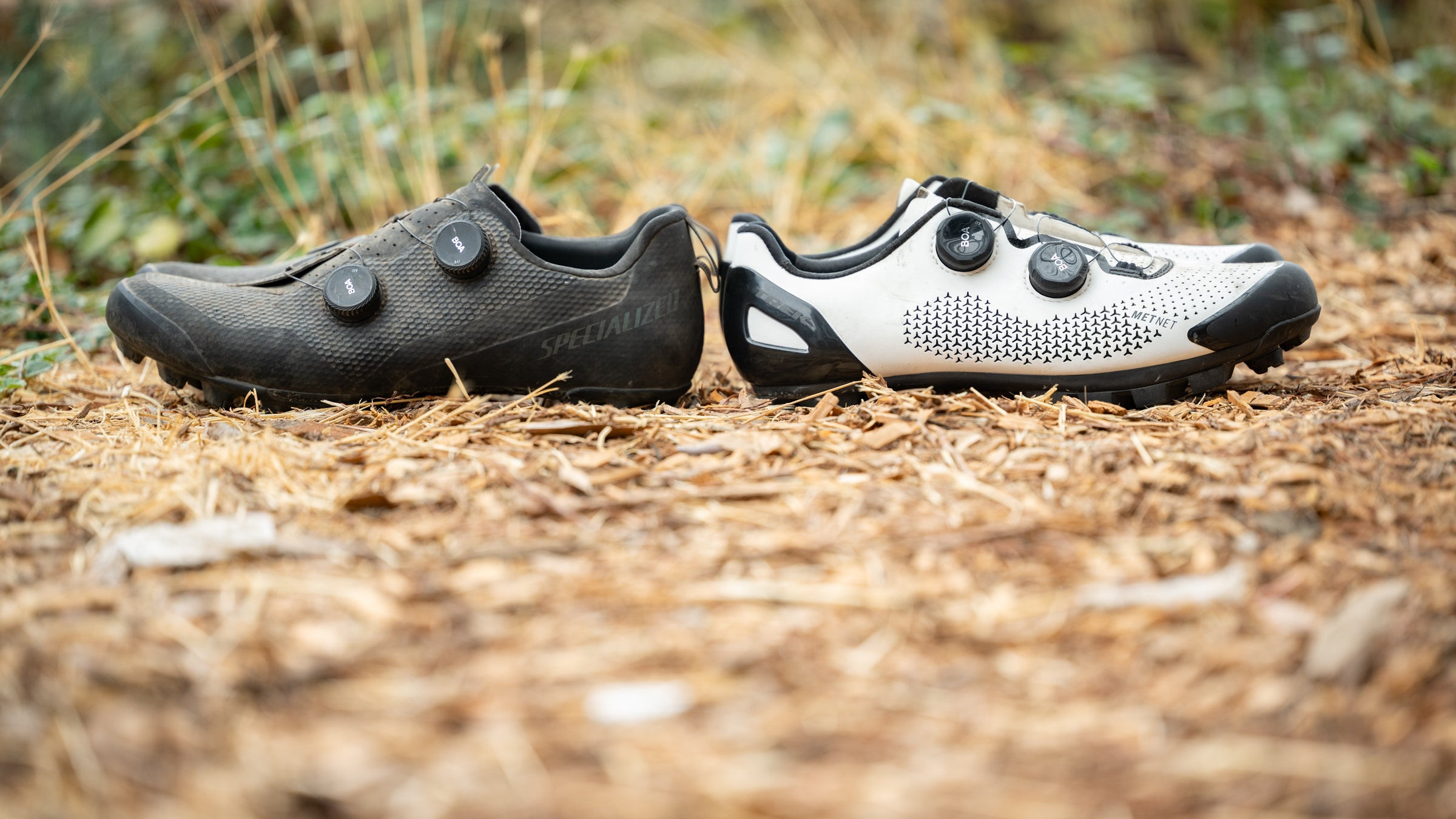
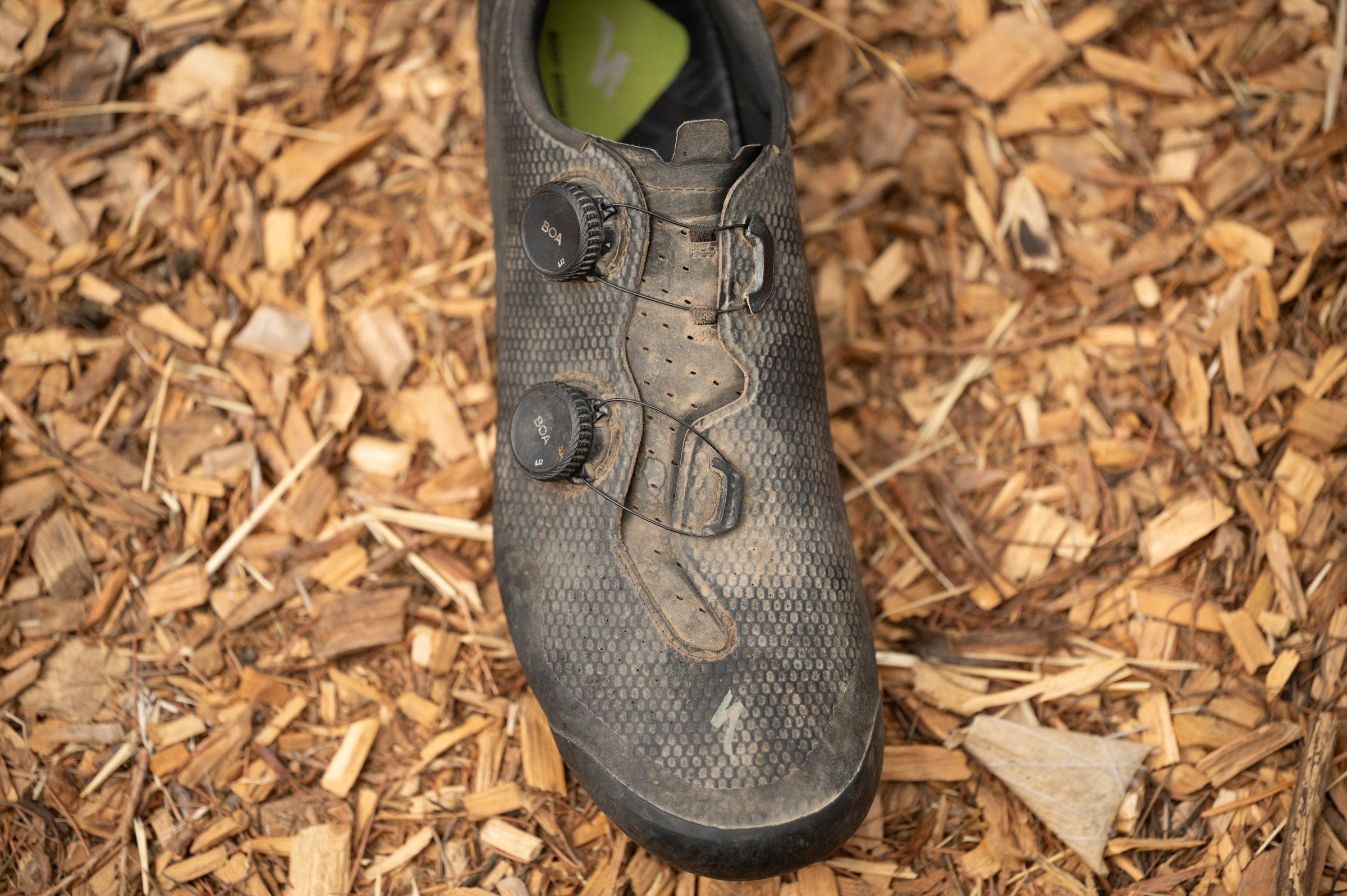 Specialized Recon 3.0 specialized bike shoes in black and white, showcasing their sleek design for gravel cycling
Specialized Recon 3.0 specialized bike shoes in black and white, showcasing their sleek design for gravel cycling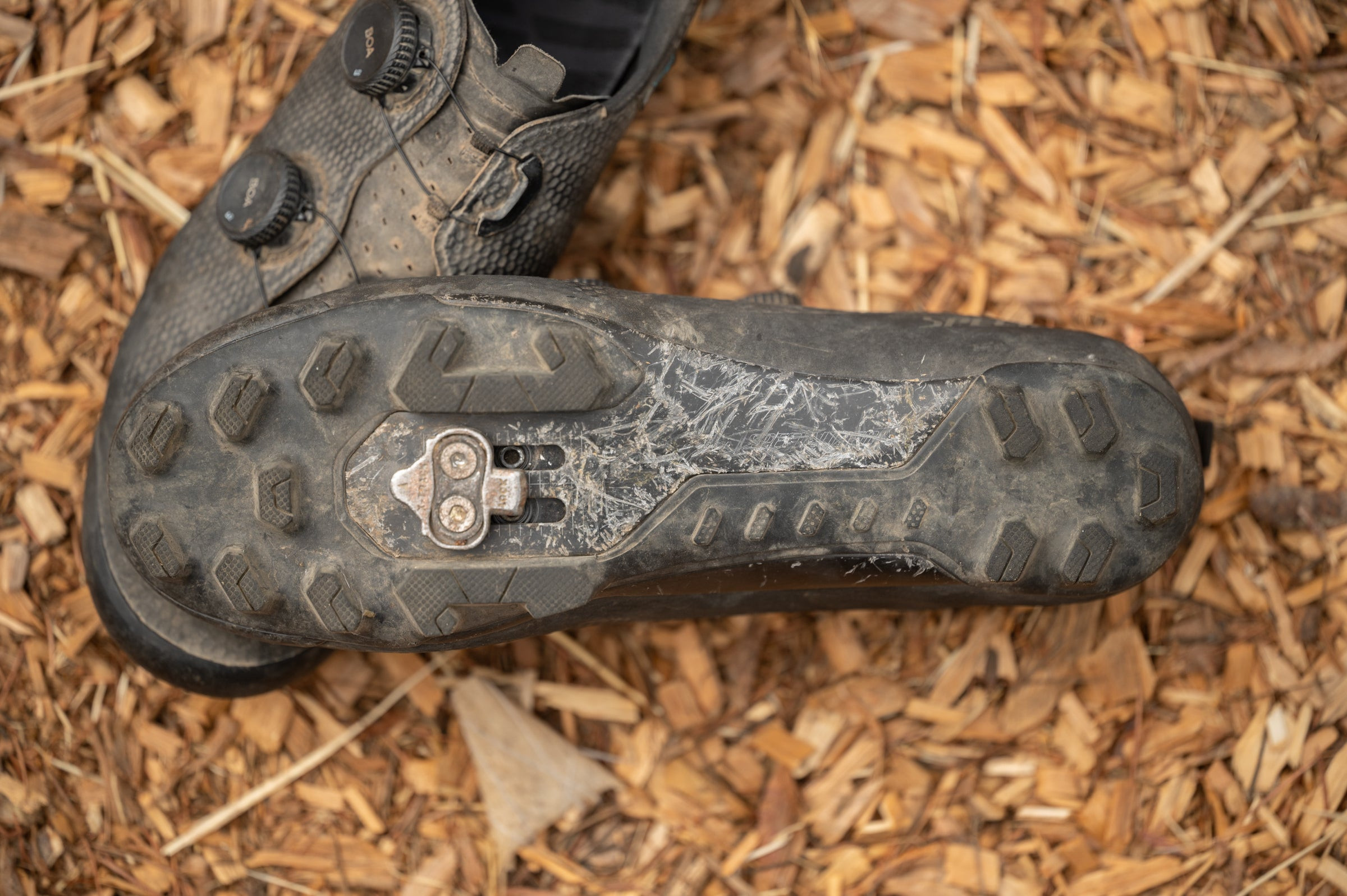 Detailed view of the Specialized Recon 3.0 bike shoe sole, emphasizing the rubber lugs and carbon plate protection, key features in specialized bike shoes for gravel
Detailed view of the Specialized Recon 3.0 bike shoe sole, emphasizing the rubber lugs and carbon plate protection, key features in specialized bike shoes for gravel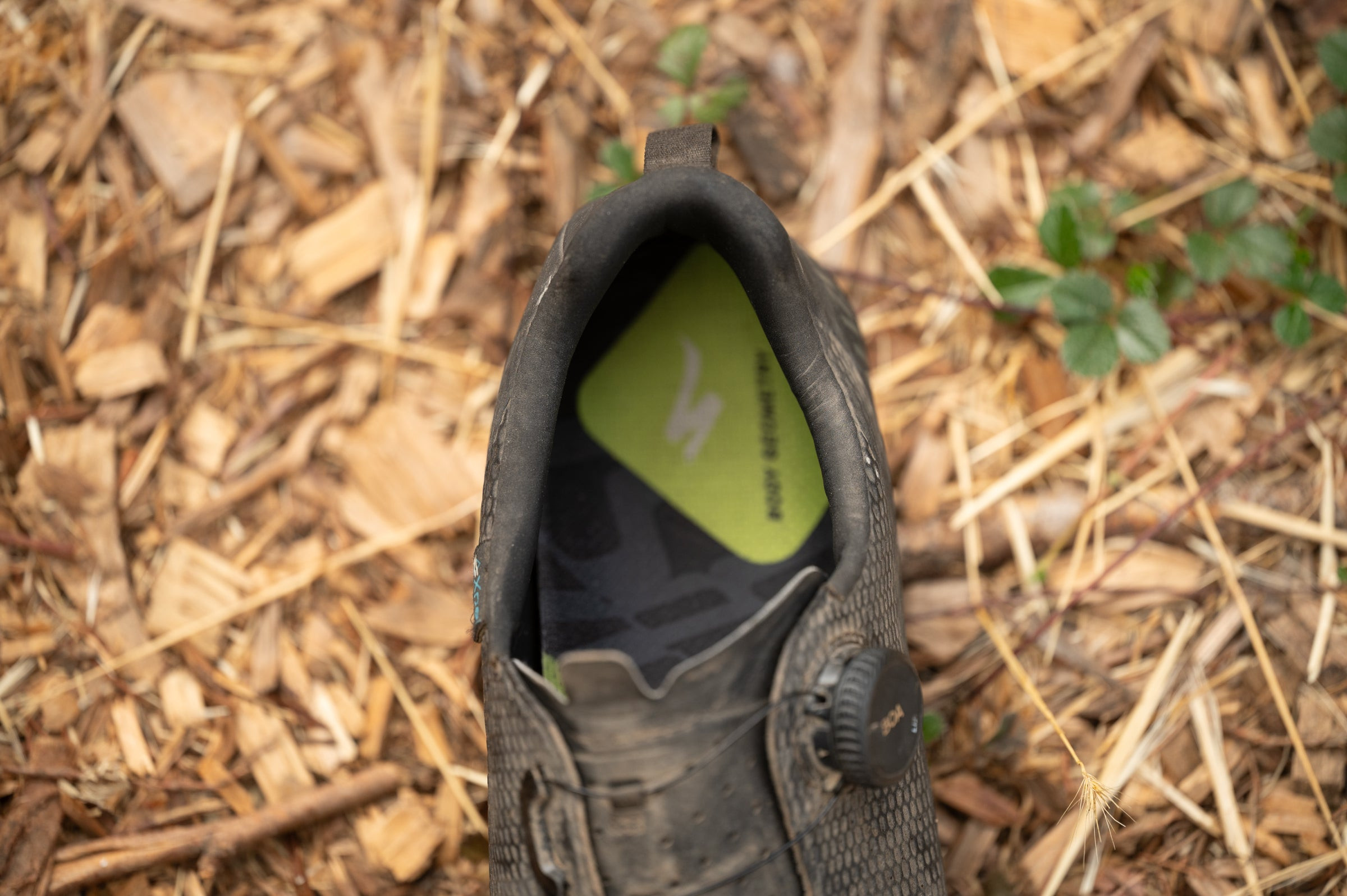 BOA Li2 dial closure system on Specialized Recon 3.0 specialized bike shoes, highlighting the precise fit adjustment for cycling
BOA Li2 dial closure system on Specialized Recon 3.0 specialized bike shoes, highlighting the precise fit adjustment for cycling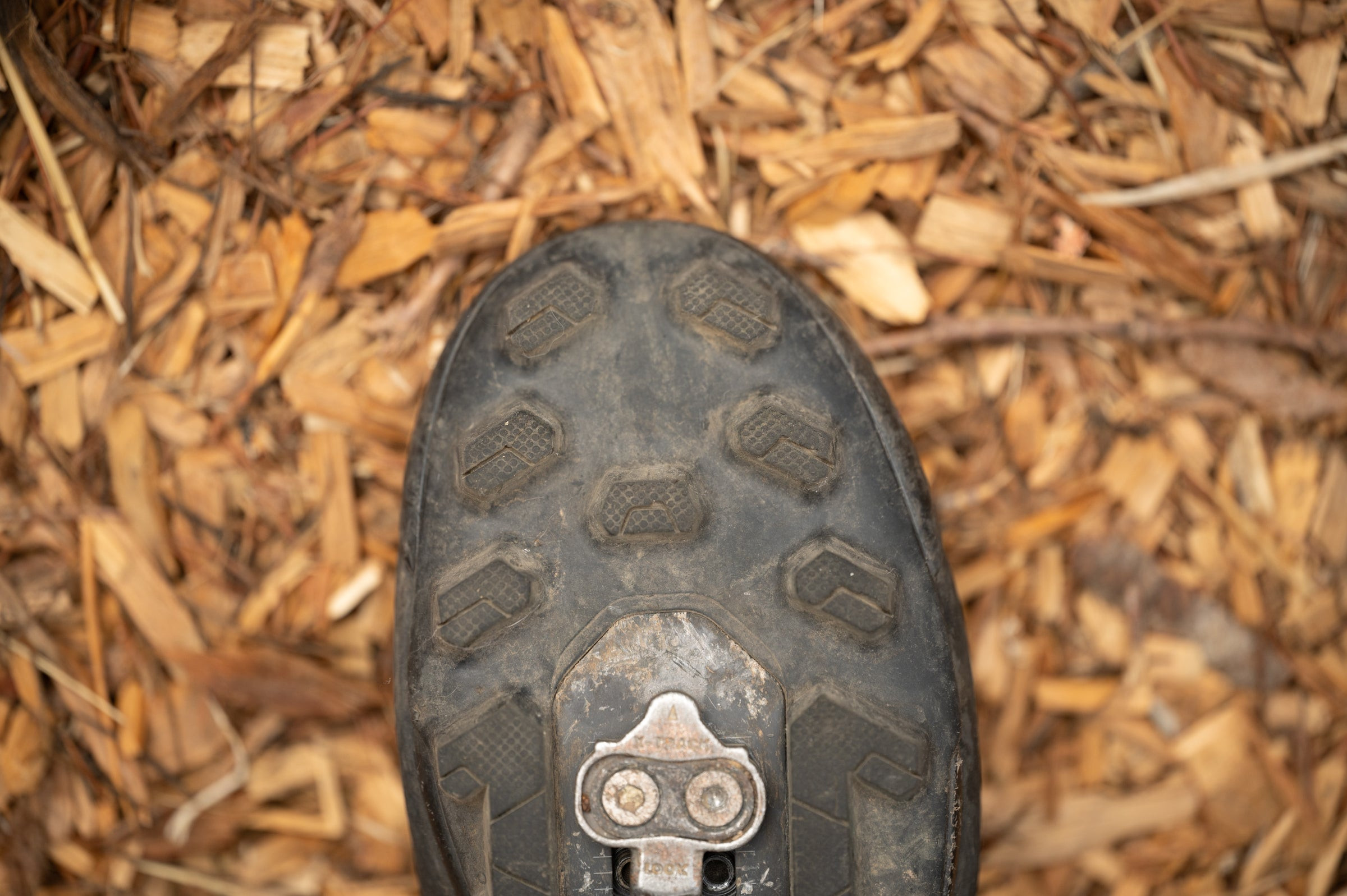 Side profile of Specialized Recon 3.0 specialized bike shoes, illustrating the robust construction and design for demanding gravel rides
Side profile of Specialized Recon 3.0 specialized bike shoes, illustrating the robust construction and design for demanding gravel rides Angled view of Trek RSL specialized bike shoes, showcasing the stiff carbon sole and lightweight design for competitive gravel cycling
Angled view of Trek RSL specialized bike shoes, showcasing the stiff carbon sole and lightweight design for competitive gravel cycling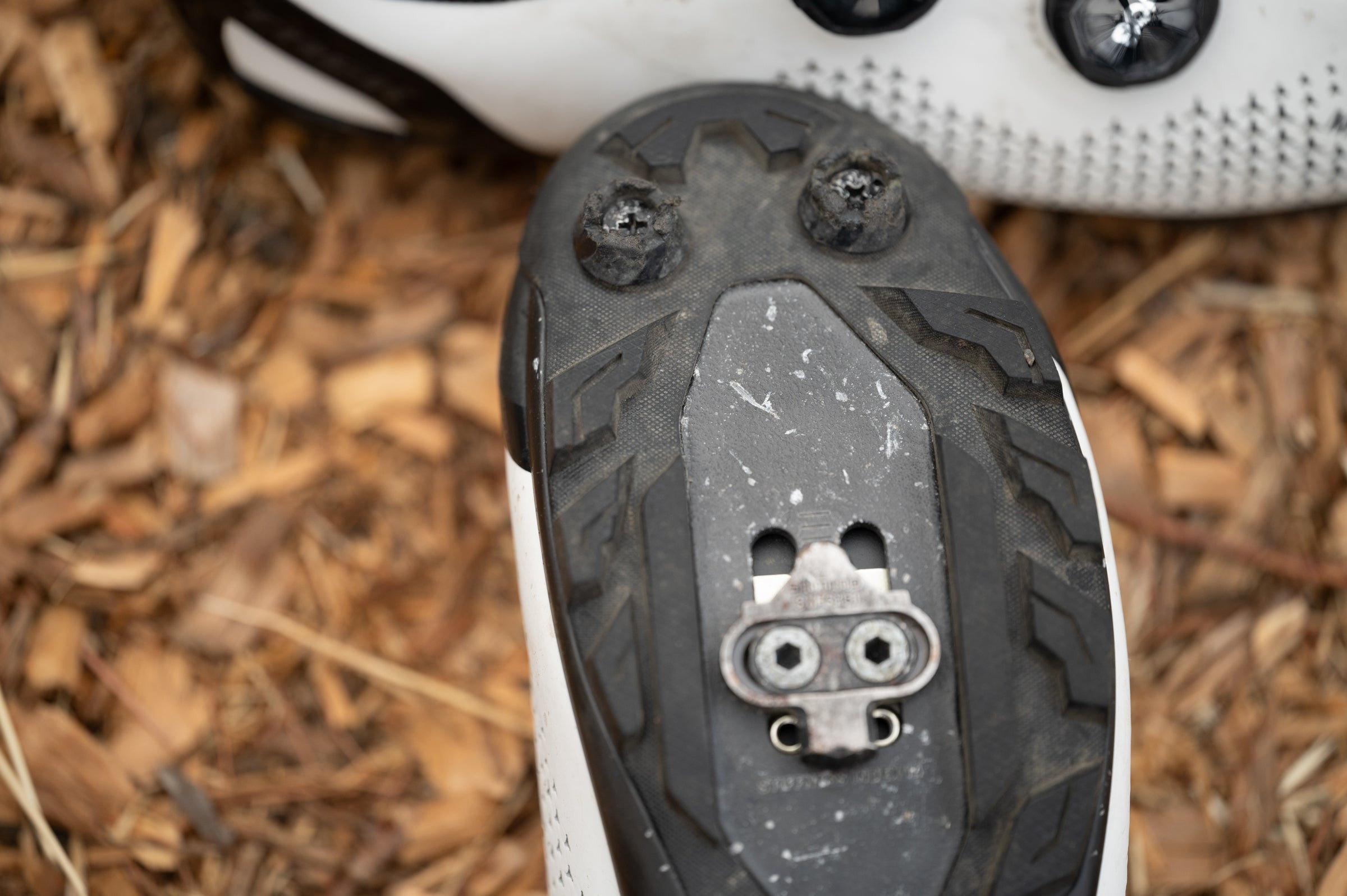 Close-up of the Trek RSL bike shoe sole, revealing the carbon construction and cleat area, a feature of specialized bike shoes for performance
Close-up of the Trek RSL bike shoe sole, revealing the carbon construction and cleat area, a feature of specialized bike shoes for performance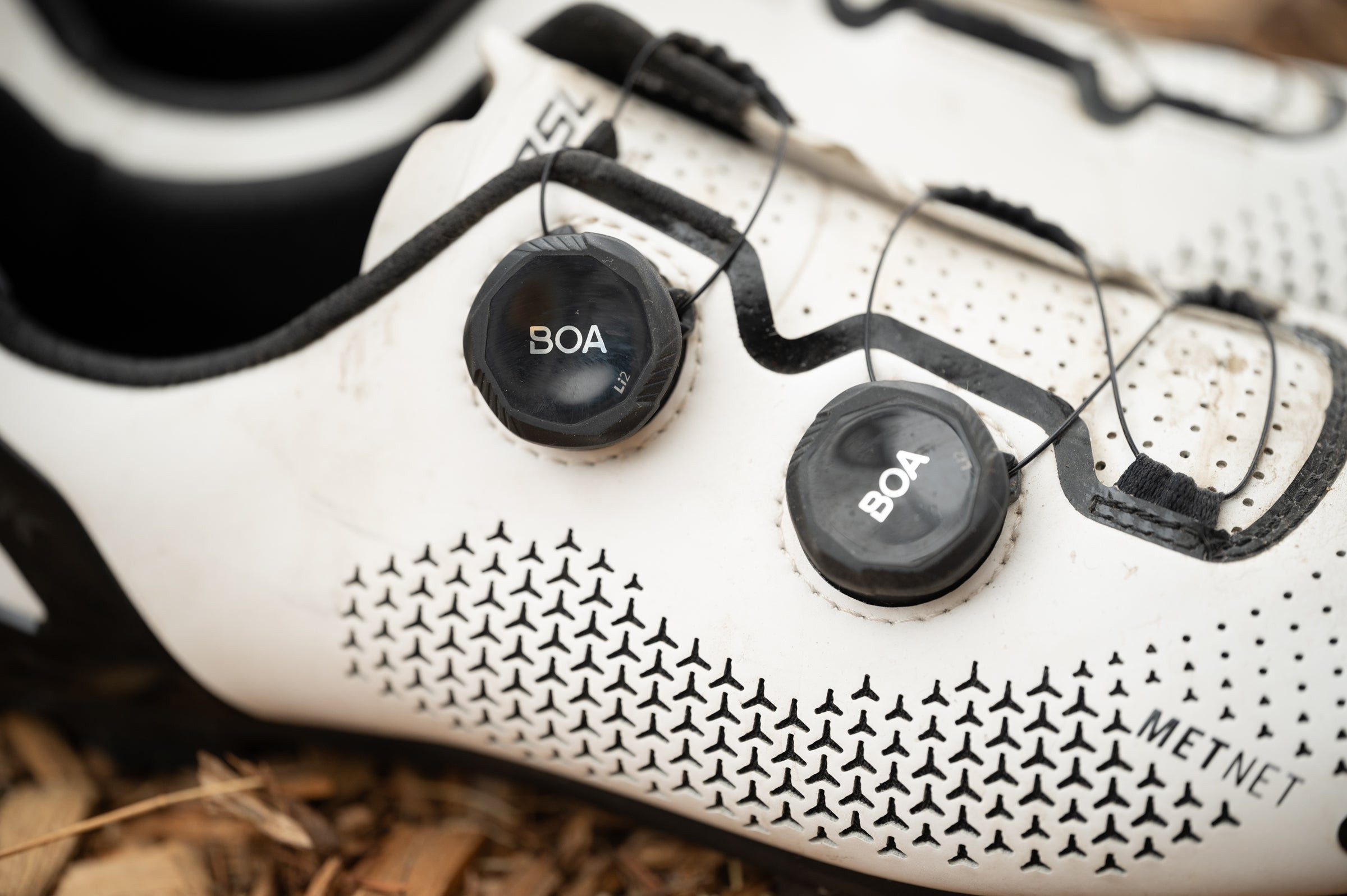 MetNet technology detail on Trek RSL specialized bike shoes, illustrating the flexible triangular cuts for enhanced comfort during gravel rides
MetNet technology detail on Trek RSL specialized bike shoes, illustrating the flexible triangular cuts for enhanced comfort during gravel rides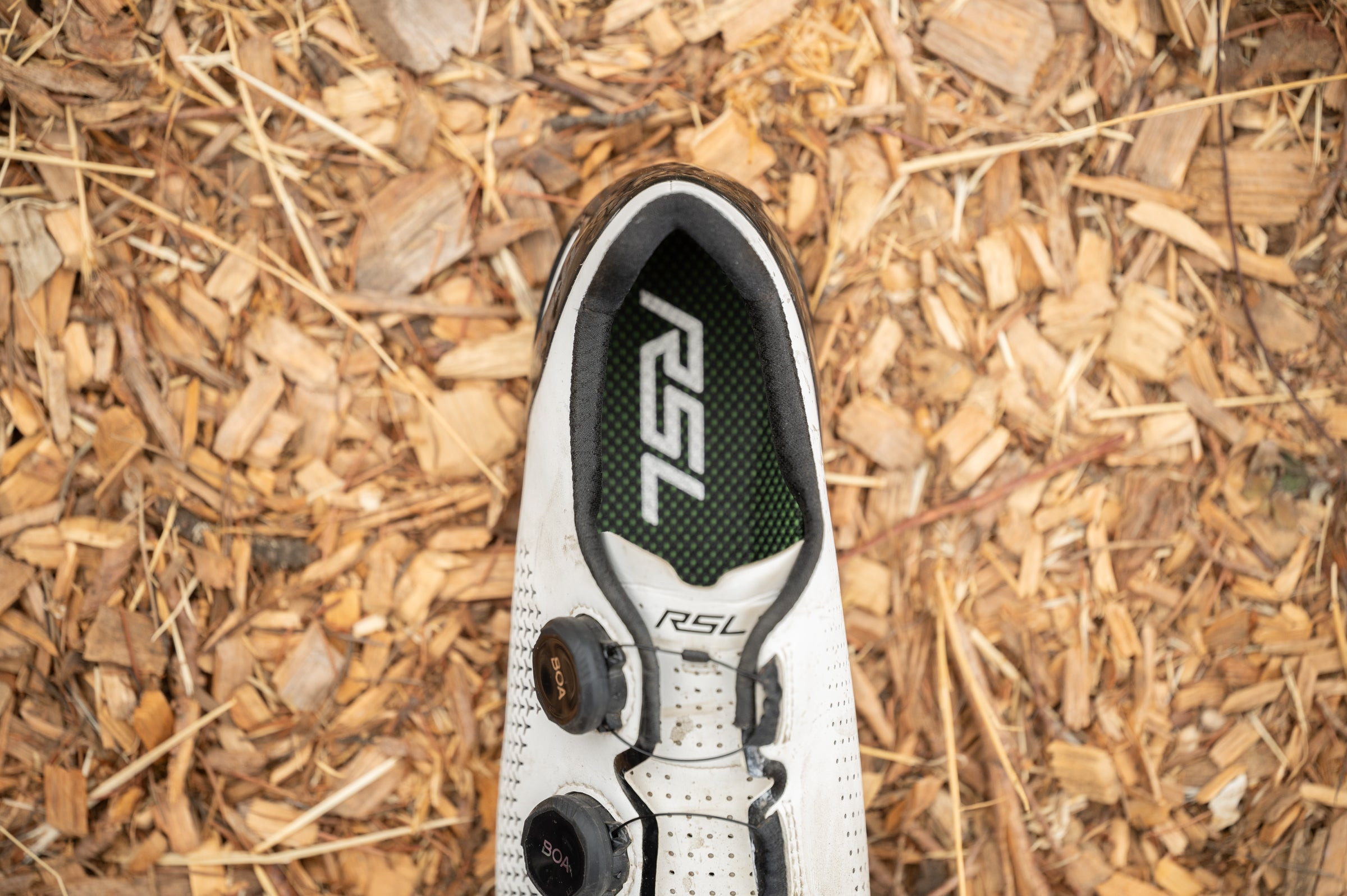 Dual BOA Li2 dial system on Trek RSL specialized bike shoes, providing precise and secure closure for optimal cycling performance
Dual BOA Li2 dial system on Trek RSL specialized bike shoes, providing precise and secure closure for optimal cycling performance